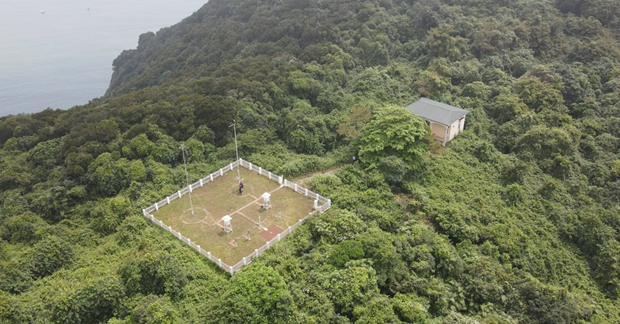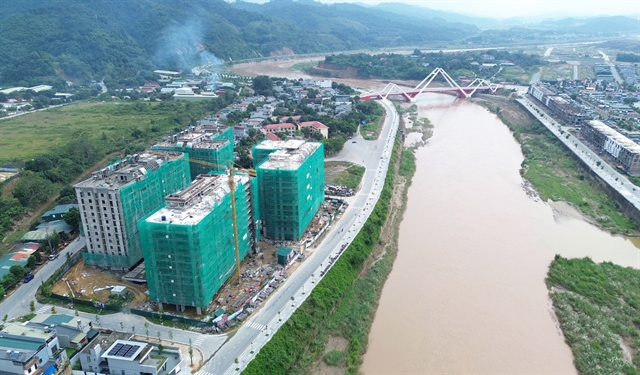 Society
Society

 |
| Hòn Ngư Hydrometeorological Station in Nghệ An province. — Photo baotainguyenmoitruong.vn |
NGHỆ AN — Looking at the report, Nguyễn Cảnh Long checks the data again before sending it to the Northern Central Hydrometeorology Station, a daily task of observers at Hòn Ngư Hydrometeorological Station in Nghệ An Province.
Ngư Island is located more than three nautical miles from the coast of Nghệ An Province. The meteorological station was built at the top of the mountain.
Talking about the daily work, the head of Hòn Ngư Hydrological Station, Hoàng Huy, said they have to pass thousands of stairs to reach the station on the mountain peak and go to the seashore to measure sea water level, monitor the clouds, and measure humidity, rainfall, wind speed and direction four times a day.
Each report carries a lot of responsibility.
Long, a 34-year-old observer, has worked at the station for nearly seven years.
He said three officers working at the station had experienced many difficulties and pressures to complete the work and send reports to the Northern Central Hydrometeorology Station, especially data related to storms and tropical depressions.
"The consequences are unpredictable if the information is not accurate as people and agencies rely on that information to respond to natural disasters proactively," Long said.
Observation of dangerous weather phenomena, such as storms, tropical depressions, strong winds, rough seas, and high waves, is also very difficult and dangerous.
The continuous change of intensity, the direction of storms and wind also changes the data, Long said.
"Observations are taken four times a day and at a certain time, at 1am, 7am and afternoon," he said. "In storm season, we must be on duty around the clock to perform observation tasks. The work requires strict discipline and accuracy of information."
Each year, five or six storms and tropical depressions directly or indirectly affect the island. The observers face the highest risks during stormy months.
About more than three nautical miles from Cửa Lò Beach, hydro-meteorologists, especially those working in remote mountain regions, often face hardships.
They seem to be living in another world with no electricity, fresh water, or people.
Huy said the living conditions are very hard.
The only source of fresh water for daily use is rainwater. The station's staff have three tanks to store water.
In the summer of 2020, the tanks ran out of water due to the prolonged drought.
They could not bathe and wash their clothes with seawater.
Without electricity, observers have to use power from a nearby military command to charge laptops and phones for three hours each day.
Food is transported from the mainland once a week. On the island, they raise chickens and grow vegetables.
However, they can only grow vegetables in the winter because they lack water in the summer.
"There are a lot of monkeys and snakes in this region, especially red-tailed green rat snake and cobras," Huy said. "Monkeys often enter the station to find food and destroy vegetable gardens. We usually wear high boots, long clothes, and carry sticks to avoid danger from snakes."
With nearly 13 years of working at Hòn Ngư Hydrometeorological Station, Nguyễn Ngọc Sơn said the hardest job is performing the task in a storm.
They must conduct the measurement every 30 minutes and then send the reports to the Northern Central Hydrometeorology Station.
In the storm season of 2017, 16 storms and four tropical depressions made landfall in the East Sea in the last six months of the year.
"I still remember a storm in 2017. Non-stop lightning and thunderstorms created light on the ground," said Sơn. "Our station was damaged heavily by strong wind and heavy rain."
With their efforts, the hydro-meteorologists of Hòn Ngư Hydrometeorological Station received the Certificate of Merit from the Ministry of Natural Resources and Environment for their contribution to the development of the natural resources and environment sector. — VNS




